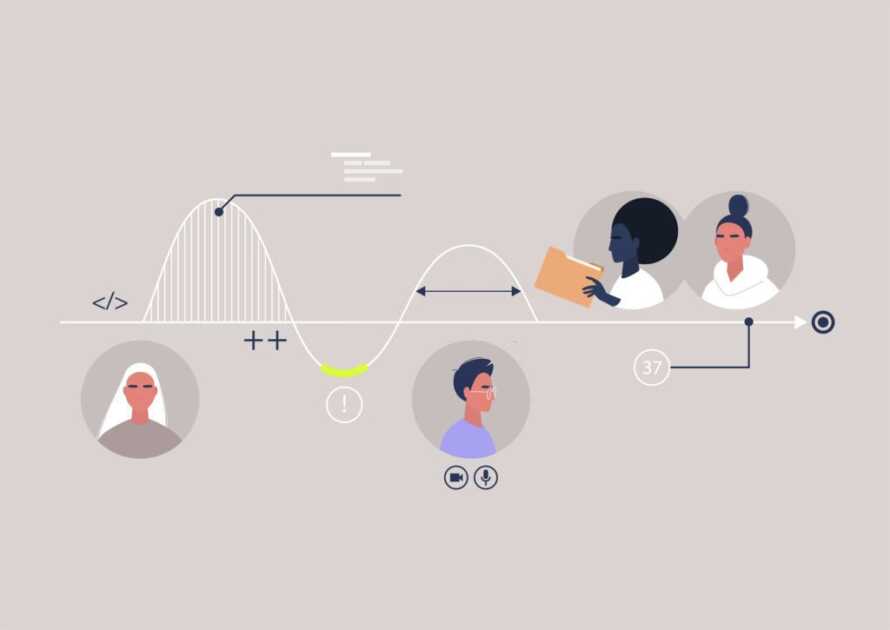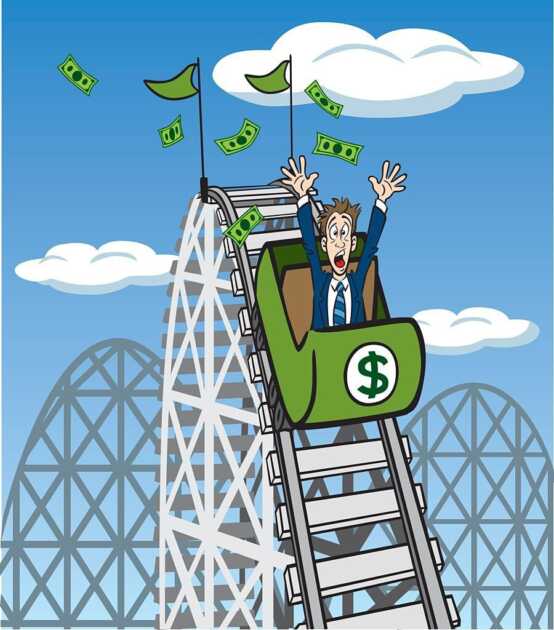Many people wonder about what is scalping in trading? Well, Scalping is a trading day strategy that involves buying and selling assets very quickly to make small profits. This can be done in a matter of seconds or minutes, and often results in the trader holding the asset for a very short period.


Scalping is often used in markets where there is a lot of liquidity, such as the Forex market, and can be a very profitable strategy for those who can execute it successfully.
How Stock Scalping Works?
Scalping is a trading strategy in the foreign exchange and commodities market. It is used by some traders to make quick profits on small price movements. Scalpers buy stocks and then sell them almost immediately, making a small profit on each trade.
Scalpers are mainly short-term traders but scalpers can also long who prefer to trade within the tick range of prices, which is sometimes called a ticker.
This term comes from the fact that these traders focus on trading stocks in 5-second intervals (Tick).
To be successful at scalping, traders need to have a good understanding of the market and be able to make quick decisions.
They also need to be able to execute trades quickly and efficiently. Stock scalping can be a very profitable trading strategy, but it does require a significant amount of time and effort to be successful.
What is a stochastic oscillator in scalping?
The stochastic oscillator is a technical indicator that is widely used by traders to identify potential turning points in the market.
The indicator is based on the premise that price action tends to repeat itself in cycles, and that these cycles can be used to predict future price movements.
The stochastic oscillator is calculated using a simple formula that measures the relationship between a security’s closing price and its price range over a given period.
The resulting number is then plotted on a scale of 0 to 100. The indicator is considered to be overbought when it is above 80 and oversold when it is below 20.
Traders often use the stochastic oscillator in conjunction with other technical indicators to generate buy and sell signals.
For example, a trader might buy a security when the stochastic oscillator is oversold and the price is beginning to move up. Conversely, a trader might sell a security when the oscillator is overbought and the price is beginning to move down.
This oscillator can also be used to identify divergences, which can be used to predict reversals. A bullish divergence occurs when the indicator is making higher lows even as the security’s price is making lower lows.
Also Read: 5 Amazing Differences Between Trade Commerce And Industry
This is an indication that the security’s price is likely to move up in the future. A bearish divergence occurs when the indicator is making lower highs even as the security’s price is making higher highs. This is an indication that the security’s price is likely to move down in the future.
It is a valuable tool for traders, but it is important to remember that it is only one part of a larger trading strategy. It is important to use the indicator in conjunction with other technical indicators and to always use sound money management principles.
Scalping vs swing trading
There are two main types of trading styles – scalping and swing trading. Both have their advantages and disadvantages, so it’s important to understand the difference between the two before deciding which one is right for you.


Scalping is a short-term trading strategy where you take quick, small profits on small price movements. This strategy is best suited for those who can stay glued to their screens and have the patience to make a lot of small trades.
The downside is that it can be very stressful and time-consuming, and you may not always make a profit on every trade.
Swing trading is a longer-term strategy where you hold onto your trades for days or even weeks, waiting for the price to swing up or down. This strategy is best suited for those who have a day job and can’t be glued to their screens all day, you can also use trading strategy 25k rule.
The downside of swing trading is that you may miss out on some quick profits if the market is moving fast, and you may have to wait a long time for the price to swing in your favour.
Scalping vs normal trading
There are two primary types of trading strategies in the financial markets – scalping and normal trading. Scalping is a short-term trading strategy where traders seek to profit from small price movements in the market.
Normal trading is a longer-term strategy where traders seek to profit from larger price movements in the market.
Scalping is a more active trading strategy than normal trading, as it involves taking many trades throughout the day. Scalpers seek to profit from small price movements in the market, and as such, they need to be very quick and decisive in their trading.
Normal trading is a more passive strategy, as it involves taking fewer trades and holding positions for longer periods.
Both trading can be profitable strategies, but they each have their ow advantages and disadvantages. Scalping is a more risky strategy as it involves taking more trades, but it can also be more rewarding as profits can be made more quickly.
Normal trading is a less risky strategy as it involves taking fewer trades, but it can also be less rewarding as profits can be made more slowly.
Which strategy is best for you will depend on your risk tolerance and trading goals. If you are willing to take on more risk for the potential of higher rewards, then scalping may be the best strategy for you.
If you are looking for a more conservative approach with less risk, then normal trading may be the best strategy for you.
Scalping trading example
Scalping is a trading strategy that involves buying and selling a security within the same day, in an attempt to profit from small price changes. For example, a scalper might buy a security at $10 and sell it at $10.05, for a profit of $0.05 per share.
Scalp trade is a high-frequency trading strategy, and as such, it can be quite risky. Scalpers are often willing to take small losses to make a quick profit, and they may trade on margins, which can amplify losses.
Despite the risks, it can be a successful trading strategy, particularly for those who are disciplined and patient. Scalpers need to be able to identify short-term opportunities and have the ability to act quickly when they arise.
Best scalping trading strategy
Scalping is a trading strategy that seeks to profit from small price changes in security. A scalper will typically buy a security and then immediately sell it, hoping to make a small profit from the price difference.
Scalpers typically trade in very liquid securities, such as large-cap stocks or highly-traded commodities, and they often use high-frequency trading techniques to take advantage of small price changes.
While scalping can be a profitable trading strategy, it is also a high-risk approach, as small price movements can quickly eat into a trader’s profits.
Moreover, scalpers must be very disciplined in their trading, as even a small loss can quickly offset any gains.
1-minute scalping strategy
There are a lot of different strategies out there, but one of the most effective is the 1 minute1-minute scalping strategy. This strategy is designed to take advantage of small price movements in the market and can be used in any time frame from 1 minute up to 1 hour.
To use this strategy, you will need to have a good understanding of price action and be able to read price charts.
1. Identify a suitable market. This can be any market that is fairly liquid and has a tight bid/ask spread.
2. Once you have found a suitable market, you will need to identify a good entry point. This can be done by looking for a market that is consolidating or has just made a small move in either direction.
3. Once you have found a good entry point, you will need to place a buy order just above the market price and a sell order just below the market price.
4. You should then set your stop loss orders at a level that will give you a 1:1 risk to reward ratio. For example, if your stop loss is 10 pips away, your take profit should be 10 pips away.
5. Once your orders are placed, you will need to wait for the market to move in your favour. If the market moves against you, your stop loss will be triggered and you will exit the trade for a loss.
6. If the market moves in your favour, your take profit will be triggered and you will exit the trade for a profit. This strategy can be used in any time frame from 1 minute up to 1 hour, but it is most effective on the 1-minute chart.
This is because the 1-minute time frame allows you to take advantage of small price movements in the market.
7. The key to success with this strategy is to always take a 1:1 risk to reward ratio. This means that for every trade you take, you should risk the same amount of money that you are aiming to make.
This will ensure that you are always making more money than you lose, even if your win rate is only 50%.
8. Once you get the idea of the market , adopt an exit strategy where the trader places multiple trades with exit points that take small losses in order toto get large gains.
This strategy can generate huge profits in periods of low market volatility and high returns-risk-ration (ROR).
Tips for New Scalper
It is a popular strategy among day traders and is often used to take advantage of small price movements in the market.
If you are new to scalping, there are a few things you should know to be successful.
First, you need to have a clear understanding of what you are trying to achieve with your trading. Are you looking to make a quick profit? Or are you trying to take advantage of a short-term opportunity in the market?
Once you know your goals, you need to find a strategy that fits your trading style. There are several strategies out there, so it’s important to find one that works for you.
Next, you need to be disciplined in your execution. This means following your rules and not over-trading. Scalping can be a very fast-paced and stressful trading style, so it’s important to stay calm and focused.
Finally, you need to have a good understanding of the market you’re trading. This includes knowing what factors can affect the prices of the securities you’re trading and what’s coming out? You can also use some right tools for scalping like Economic Calendar.
By following these tips, you can start scalping the market like a pro.
Scalping vs. Day Trading
There are a few key differences between scalping and day trading. Scalping is a trading strategy where you take small profits on a frequent basis. This is typically done by holding a position for a very short period, generally no more than a few minutes.


Day trading, on the other hand, is a day trading strategy where you hold a position for a single day. You may take multiple trades throughout the day, but your goal is to end the day with no open positions.
One of the main differences is the time frame that each strategy targets. Scalpers are looking for small, quick profits, while day traders are looking for slightly larger profits that can be accrued over the course of a single day.
This difference in time frame means that scalpers need to be much more active and have a higher level of focus than day traders.
Another key difference is the position size. Scalpers will typically take much smaller positions than day traders. This is because they are looking for small profits from each trade.
Day traders, on the other hand, may take larger positions because they are looking for larger profits over the course of the day.
The final key difference is the level of risk. Scalping is a very high-risk strategy, as you are looking for small profits on a very frequent basis. This means that a single losing trade can have a significant impact on your overall profitability.
Day trading is a less risky strategy, as you are only taking trades for a single day. This means that a losing trade is less likely to have a significant impact on your overall profitability.
Which strategy is better? That depends on your goals as a trader. If you are looking for quick, small profits, then scalping may be the better strategy for you. If you are looking for slightly larger profits over a longer period of time, then day trading may be the better strategy for you.
Pros and Cons of Stock Scalping
Stock scalping is a trading strategy that involves buying and selling stocks within a short time frame, usually within minutes or hours. Scalpers aim to profit from small price changes in a stock’s price.
There are a few pros and cons worth considering before deciding if this strategy is right for you.
Pros:
1. Scalpers can make a lot of money in a short span.
2. Scalpers can trade with a small amount of capital.
3. Scalpers don’t need to wait for big price movements to make a profit.
4. Scalping can be a fun and exciting way to trade stocks.
Cons:
1. Scalpers need to be very disciplined and focused.
2. Scalping can be stressful and demanding.
3. Scalpers need to have a very good understanding of the markets.
4. Scalpers may miss out on bigger price movements if they are too focused on small price changes.
5. Scalping can be risky and requires risk management. If not done properly it can result in large loss.
Is Stock Scalping Illegal?
Scalping is the act of buying and selling shares in rapid succession, with the intention of to make a quick profit. There are two main types of scalping – marketable limit orders and block trades.
Marketable limit orders allow you to buy or sell a security at a predetermined price, while block trades involve purchasing or selling entire blocks of shares at one time.
The SEC has not made a clear ruling on whether or not scalping is illegal, but the practice is often seen as unethical and unsound.
There is no specific law governing stock scalping. However, some people argue that scalping is illegal because it constitutes market manipulation. Market manipulation is when a trader artificially inflates or deflates the price of a security for their benefit.
This is considered unethical and can be punishable by law. Others argue that scalping is legal because it is a legitimate trading strategy.
Some exchanges even have rules in place specifically for scalpers. So ultimately, whether or not scalping is legal depends on the interpretation of the law and the specific rules of the exchange.
Scalping trading in Zerodha
Zerodha is a trading platform that allows users to buy and sell stocks, commodities, and other financial instruments. Scalping is a popular trading strategy among Zerodha users because it allows them to take advantage of small price movements.
Zerodha users who employ scalping strategies can potentially make a lot of money if they can execute their trades quickly and accurately. You may use any platform for scalping but always remember it should never go beyond the regular exchange commission rate.
Frequently Asked Questions
What is scalping in trading?
Scalping is the practice of trading small amounts of stock or futures contracts in order to profit from small price changes. Scalping can be done electronically through market analysis programs or manually through charting.
What are the different types of scalping in trading?
There are three types of scalping in trading: small-volume scalping, medium-volume scalping, and large-volume scalping.
What are the best practices for scalping in trading?
There is no one “correct” scalping technique, but some common practices include trading small volumes and holding onto positions for short periods of time.
What are the benefits of scalping in trading?
Scalping is the act of buying and selling securities within a short time frame in order to profit from small price differences. Scalping has several benefits, including improved trading accuracy, increased liquidity, and the ability to react quickly to market changes. Scalping can also be a useful way to increase trading volume.
What are the risks associated with scalping in trading?
Scalping is the trading of small quantities of securities for the purpose of profit; scalpers may be risking their own money as well as the money of the public.
What is a scalper in trading?
A scalper is a trader who trades small quantities of securities. Scalpers are often active at the market’s opening and close, trading for the purpose of making quick profit.
What is a scalp in stock trading?
A scalp is a very short-term trade, usually lasting no longer than a few minutes. The goal is to make a small profit, and then get out of the trade as quickly as possible. Scalpers typically trade using very high leverage, which can lead to large losses if the trade goes against them.
What is scalp trading in crypto?
Scalp trading is the act of trading digital assets (crypto) purely on the basis of price moves of the underlying asset, without actually holding the underlying asset.
What is scalp trading in Forex?
Scalping is the practice of trading small amounts of currency pairs frequently in the hope of making quick profits. Forex Scalping is often used by traders as a means to make small changes to their trading strategies in order to profit from short-term market movements. Scalping can be done through the use of limit or stop orders as well as using technical analysis indicators.
What is scalping in options trading?
Scalping is the practice of trading small volumes of options for the purpose of making a profit as quickly as possible.
Is scalping trading good for beginners?
There is no simple answer to this question. Scalping is a high-frequency trading strategy that can be very profitable for experienced traders, but it can also be very risky.
Beginners who are new to the markets may not have the experience or the risk tolerance to handle this type of trading.
How can I make $100 weekly trading Forex?
There are a number of ways to make $100 a week in Forex trading. One way is to trade on a Demo account and make consistent profits each day. Another way is to use a micro account and trade mini lots.
This will allow you to make a profit even if the market moves against you by a small amount. Finally, you could use a managed account where someone else does the trading for you and you simply receive a percentage of the profits.
Conclusion
Scalping is the practice of trading securities that have small changes in price, to profitably trade trade all or a portion of the position at any time. Scalping allows traders to trade small positions quickly and easily while limiting the risk of a large loss.
Scalping can be used to day trade the market, or to trade stocks and options. If you understand what scalping means for successful trades, you’ll have an edge over others who haven’t yet found success.







Sign up
You may also like
Can You Make Money with Turo? – Yes, You can!
20 Amazing Questions for Team Building, and Hiring Employees
15 amazing platforms to sell AI generated digital art efficiently and earn money
The Complete Guide to Importance And Role Of MSME In Indian Economy